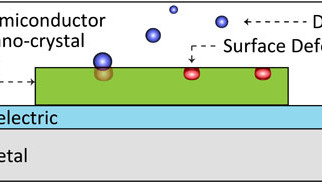New Sensor could sniff out Land Mines
on

A new type of sensor being developed by a team of researchers at the University of California, Berkeley based on Plasmon laser technology is so sensitive it may be able to detect the presence of land mines in situ. In a paper published recently in the journal ‘Nature Nanotechnology’ a team of researchers led by Xiang Zhang, UC Berkeley professor of mechanical engineering, have outlined how they have been able to find a way to increase the sensitivity of a light-based plasmon sensor to detect minute concentrations of explosives. The new sensor consists of a layer of magnesium fluoride sandwiched between a semiconducting layer of cadmium sulfide, and a sheet of silver.
According to the university press release the researchers took advantage of the chemical makeup of many explosives, particularly nitro-compounds such as DNT and its more well-known relative, TNT. Not only are these unstable nitro groups more explosive, they are also characteristically electron deficient, which increases the interaction of the molecules with natural surface defects on the semiconductor sensor. The device works by detecting the increased intensity in the light signal that occurs as a result of this interaction. In a test the airborne chemicals of various explosives: 2,4-dinitrotoluene (DNT), ammonium nitrate and nitrobenzene were detected at concentrations as low as 0.67 parts per billion, 0.4 parts per billion and 7.2 parts per million, respectively.
The new device is significantly smaller than other explosives detection sensors currently available making it ideal for incorporation into hand-held detectors.


Discussion (0 comments)